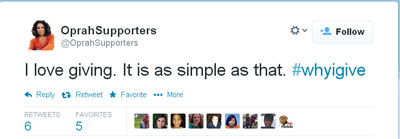Micro-actions are gathering pace. Vibeka Mair looks at recent examples and explores the key to their success.
Last night I played Cancer Research UK’s amazingly innovative smartphone game, which in four weeks has seen gamers analyse gene data which would have taken a scientist six months to analyse by eye.
Play to Cure: Genes in Space is great. It’s easy to download, and most importantly looks and feels like a computer game. CRUK branding is there, but it doesn’t overwhelm the game.
It’s pretty clunky and hard to play (possibly a deliberate hat-tip to old-school games) but this does not affect the enjoyment of the game. It’s a bit like Space Invaders - you guide yourself through meteors and try to blast big rocks – and just the thought that by playing you are helping, in a small way, to find cures for cancer, gives you a genuine warm glow.
I read reviews on the game, and found I was not alone. Many others also felt the game was difficult to play, but the idea was so compelling that it didn’t matter. The concept shone through and people persevered with it.
Another plus is the feeling that you are part of a community of worldwide ‘citizen scientists’ playing the game and collectively helping scientists tackle cancer.
This feeling of being part of something shared and important should never be overestimated. Marketers still talk about the amazing feeling the London Olympics generated in just two short weeks.
A fortnight of BBC dominated by sport (bringing us back to the 80s when there were only four channels and you were all likely to watch the same thing) and office chats about the last race or football match created a shared experience which is unbeatable. A colleague who was lucky enough to attend an event at the Olympic Park talked about the pride he felt that London was the centre of the world.
I recently saw Beyonce perform at the O2, and the buzz created by thousands of people simultaneously singing along and enjoying the moment is great. And Beyonce certainly tried to create that feeling you were part of something special, asking her fans to remember to tell people in ten years’ time that they were lucky enough to experience the Miss Carter Tour.
These are some of the keys to developing successful micro-actions: it must be a great and simple idea; quick and easy to participate in; something which can be shared by a lot of people, and able to create that unbeatable feeling that you are making a difference or being a part of something important.
CAF’s recent social media campaign to get people to share their motivations behind their charitable giving has some elements of this. Via the hashtag #whyIgive CAF urges its supporters to tweet about why they volunteer or donate.
It’s a simple act, which is quick and easy, it’s shared on a popular shared community platform and it makes you remember why you make a difference. It’s so good even Oprah Winfrey's got involved!

I definitely think micro-actions will be essential to charities in the future. We live in an increasingly busy and flexi-time world, where the traditional nine-to-five and volunteering or fundraising at the weekends and evenings does not befit the lifestyles of working mums or shift workers.
It may initially feel like micro-actions undertaken for ten or 15 minutes won’t make much difference. But Cancer Research UK’s bold innovation has shown what a few minutes, collectively around the world, can achieve.
On 15th May Fundraising First Thing is holding a breakfast debate on mass participation fundraising









